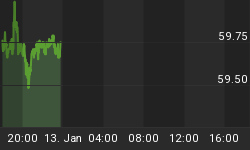Since 2000, oil companies working in the U.S. have doubled the number of wells drilled per year - with a glaring lack of results.

While more investment dollars have been flowing into oil exploration, less oil has been flowing out of the ground. The zones being accessed by developmental wells are third-tier producers, so the new drilling has failed to offset the depletion of America's aging oil fields.
The realization is setting in that the United States has already discovered all the big pools of easy-to-access oil within its borders. The best parts of the turkey have been eaten, and now we're trying to make the leftovers last as long as possible. There may be a few prizes left on the outer continental shelf, but these will be difficult to discover and expensive to exploit.
Last week the White House admitted that complacency by previous governments has let the problem get worse. When asked about Alaska and the continental shelf, Edward Lazear, chairman of the White House Council of Economic Advisers said: "We could have been thinking about all of this 10 or 15 years ago when it comes to alternatives or new exploration, and we weren't." Today's efforts, he implies, are too little, too late.
Lazear gave some other telling insights into the way the current administration assesses the U.S. oil situation. According to the White House's research, global oil demand isn't going to fade, as so many pundits have speculated, even if there is an economic slowdown in the U.S.
Instead, growth in oil demand "is here to stay and will be around for a very long time to come, until we find significant ways to conserve." Notice the resignation implicit in this statement. There's no attention to boosting supply; rather, the only hope for price relief is to dampen demand.
Oil shale, despite all the hype, won't be the magic bullet. Currently, U.S. oil shale is producing only a few thousand barrels a year from test projects, and ramping up from there faces enormous economic and environmental hurdles. It's difficult to see how the Green River formation can be turned into the next Texas without putting a huge strain on the Colorado River, a major lifeline of water supply to America's southwestern states.
The Argonne National Laboratory estimates that 1 million barrels per day of new oil production from oil shale would consume up to 300,000 acre-feet of water per year. It would also require 1.2 gigawatts of electricity, the equivalent of 10 new power plants, plus five new coal mines to feed them. Eventually, high oil prices will drive the development of oil shale forward, but it will take decades, not years, to figure out the logistics of drawing oil from stone on an economical, mass production scale.
But what about ethanol? E85, a blend of 85% ethanol and 15% gasoline, might buffer the impact of oil prices a little, no matter where global oil demand takes us. The White House has been a stout supporter of ethanol, mandating that fuel producers supply at least 36 billion gallons of renewable fuel in the year 2022.
"The new variable is alternative fuels," Mr. Lazear says. "It will take seven to ten years to know whether it will really pan out." That doesn't sound particularly upbeat, but it is realistic. Even the current administration realizes that for the foreseeable future, the benefits of ethanol are marginal at best. Ethanol is a long shot, they say, so keep your fingers crossed.
And if you think this is the isolated opinion of one White House staffer, listen to what's coming out of the U.S. Department of Energy. Just last week, Assistant Energy Secretary Alexander Karsner said that "[t]he places where oil can be found and extracted and brought to bear in the world are decreasing. It will get harder, and demand will outstrip supply for probably the rest of my lifetime."
You could view these dismal evaluations as disheartening, or you could find it reassuring to know there are a few minds in government that grasp the severity of the global energy crisis. At least they've acknowledged that no new, magical source of supply will spring up to halt the dynamics driving oil prices higher.
How long will it be before we hear the phrase 'Peak Oil' invoked by a U.S. President to emphasize the need for energy independence? The sooner it happens, the better. After all, the first step toward solving any problem is overcoming denial.
Chris Gilpin is a senior editor of the Casey Energy Speculator (CES), a monthly newsletter dedicated to uncovering deeply undervalued investment opportunities in oil, natural gas, uranium and alternative energy. The CES specializes in the unbiased investigation of small-cap energy companies with the very real potential for 100% or better returns over a short time horizon.
You can sign up today for a full-year subscription for just $179 (a 28% savings off our retail rate). Then take an unhurried three months to decide whether the Casey Energy Speculator is right for you... if not, cancel for a no-questions-asked refund of every penny you paid. Click now to learn more.
















